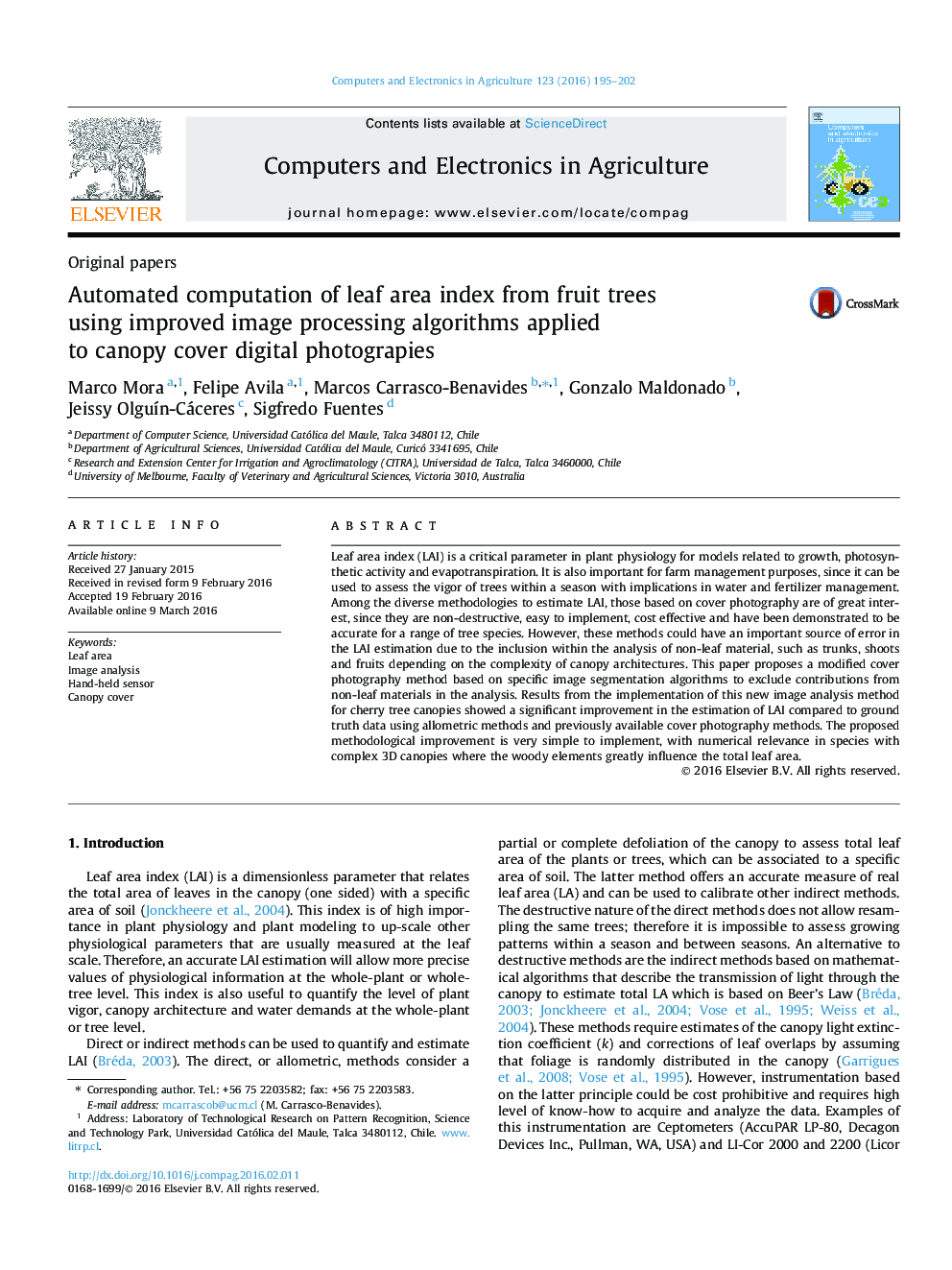| کد مقاله | کد نشریه | سال انتشار | مقاله انگلیسی | نسخه تمام متن |
|---|---|---|---|---|
| 83955 | 158856 | 2016 | 8 صفحه PDF | دانلود رایگان |
• An improved image analysis method to estimate leaf area index has been tested.
• Improvements consist in image segmentation algorithms to exclude non-leaf material.
• Results suggest that this method is an affordable alternative to compute LAI.
Leaf area index (LAI) is a critical parameter in plant physiology for models related to growth, photosynthetic activity and evapotranspiration. It is also important for farm management purposes, since it can be used to assess the vigor of trees within a season with implications in water and fertilizer management. Among the diverse methodologies to estimate LAI, those based on cover photography are of great interest, since they are non-destructive, easy to implement, cost effective and have been demonstrated to be accurate for a range of tree species. However, these methods could have an important source of error in the LAI estimation due to the inclusion within the analysis of non-leaf material, such as trunks, shoots and fruits depending on the complexity of canopy architectures. This paper proposes a modified cover photography method based on specific image segmentation algorithms to exclude contributions from non-leaf materials in the analysis. Results from the implementation of this new image analysis method for cherry tree canopies showed a significant improvement in the estimation of LAI compared to ground truth data using allometric methods and previously available cover photography methods. The proposed methodological improvement is very simple to implement, with numerical relevance in species with complex 3D canopies where the woody elements greatly influence the total leaf area.
Proposed improvement of leaf area index estimation for fruit trees using a two-level automated segmentation to isolate non-leaf material from the analysis where: (a) is the original image; (b), (c) and (d) are the resulting images for the first segmentation level and (e), (f) and (g) are the resulting images for the second segmentation level.Figure optionsDownload as PowerPoint slide
Journal: Computers and Electronics in Agriculture - Volume 123, April 2016, Pages 195–202
